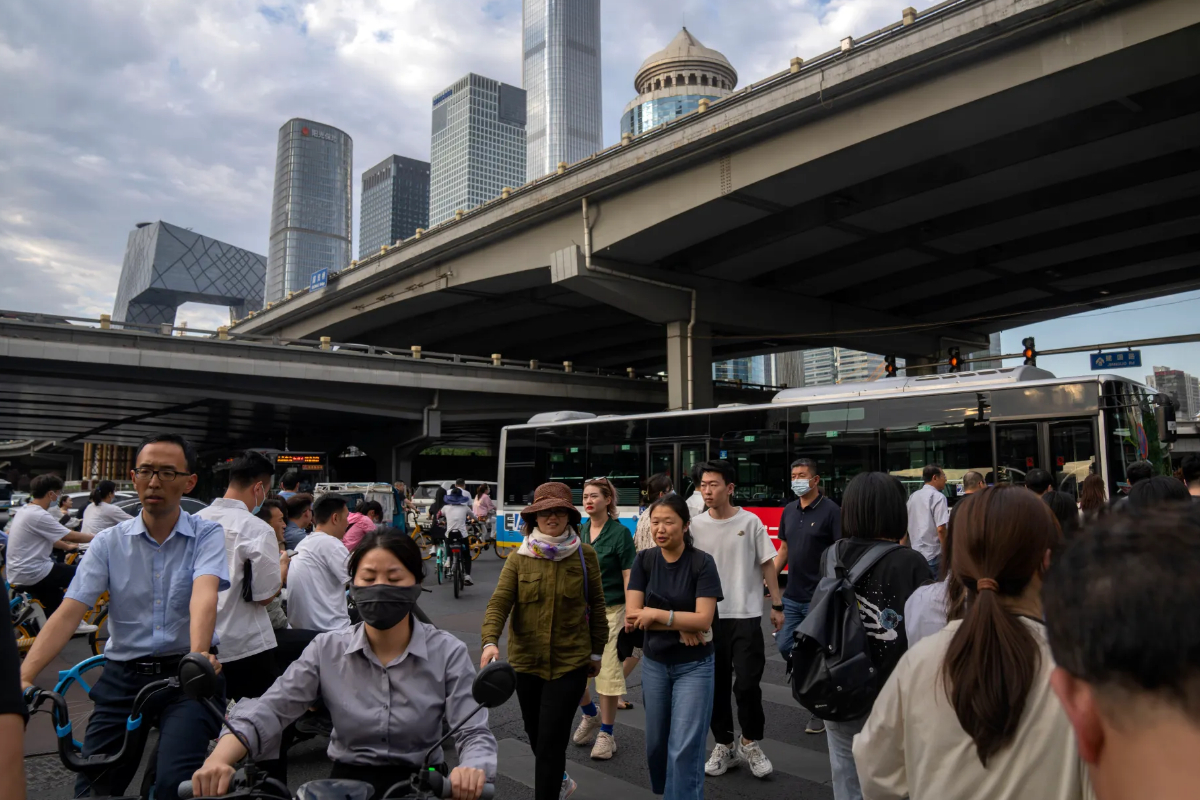- China’s second-quarter GDP growth rate of 6.3% falls below analysts’ forecasts.
- The quarterly growth rate of 0.8% marks a significant decline from 2.2% in the first half of the year.
- Despite the slowdown, China’s growth outpaces the previous quarter’s expansion of 4.5%.
China’s economy experienced a slower-than-expected growth rate of 6.3% in the second quarter of the year, according to government data released on Monday.
This figure was below analysts’ forecasts, considering the lackluster growth the previous year. On a quarterly basis, the growth rate was 0.8%, which met expectations but marked a significant decline from 2.2% in the first half of the year.
Experts predict that China’s economy will continue to decelerate in the coming months due to weakened demand for its exports in other countries. As post-pandemic recoveries lose steam worldwide, the second-largest economy is expected to face challenges.
Despite the slowdown, China’s GDP growth of 6.3% from April to June outpaced the 4.5% expansion in the previous quarter.
This relatively strong growth can be attributed to the fact that the economy grew by just 0.4% in the same period in 2022, as strict COVID-19 lockdowns were imposed.
While government officials maintain that China can achieve its growth target of around 5% for the year, analysts are less optimistic. Moody’s Analytics economist Harry Murphy Cruise described the latest figures as a “worrying result” for an economy that has been struggling to gain momentum.
“China’s recovery is going from bad to worse,” he stated. “After a sugar injection in the opening months of 2023, the pandemic hangover is plaguing China’s recovery.”
[embedpost slug=”/china-plans-to-increase-defense-by-7-2-and-targets-by-5-economic-growth-rate/”]
Government expenditure is likely to benefit vital areas such as real estate and construction, but it will not be a “silver bullet,” he added.
Regulators have the option to lower interest rates, as suggested by Marcella Chow, a global market strategist at J.P. Morgan Asset Management, in order to supplement increased government spending.
Chow said, “The weak economic readings suggest an urgency in escalating policy support so as to stabilize expectations.”
China’s first-quarter GDP surpassed expectations, experiencing a growth rate of 4.5% as consumers eagerly returned to shopping malls and restaurants following the removal of three years of “zero-COVID” restrictions in late 2022.
The government’s growth target of approximately 5% was considered conservative and can only be achieved if the economy maintains its current growth momentum.
However, June’s data indicated a decline of 12.4% in exports compared to the previous year, reflecting weakened global demand due to increased interest rates in the US and Europe to tackle inflation.
Although retail sales in June rose by 3.1% compared to 2022, analysts viewed this increase as positive but insufficient.
On a brighter note, industrial output exceeded analysts’ expectations, rising by 4.4% in June compared to the same period in the previous year.
While China’s policymakers are not currently combating inflation, they may have to address the opposite issue of deflation, which could result from weak demand and falling prices.
The government has attempted to stimulate lending and spending with mixed success. Fixed-asset investment rose by 3.8% in the first half of 2023 compared to 2022.

















